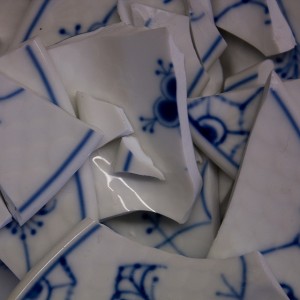Recently the “Lesson of the Broken Plate,” as I call it, has been making the social media rounds and has even been incorporated into the lesson plans of a few teachers I know. It’s a simple little exercise, designed to illustrate how our words and actions can sometimes have irreversibly damaging consequences. If you have somehow missed it, here is the most common version:
– Grab a plate and throw it on the floor.
– Okay, done.
– Did it break?
– Yes.
– Now, say sorry to it.
– Sorry.
– Did it go back to how it was before?
– No.
– Do you understand?
That’s a pretty powerful image and the message it sends is particularly relevant in today’s world where everyone from politicians to corporate executives to your cousin’s husband casually tosses off an “I’m sorry” to dismiss the most egregious abuses of trust. Certainly, that kind of “I’m sorry” has little meaning, but even truly heartfelt and remorseful apologies can’t turn back the clock and make everything as it was before.
The takeaway lesson from all of this, of course, is “Don’t throw plates on the floor!” But as much as we understand that concept, we can’t always ensure its practice. Inevitably, plates, i.e., hopes and dreams, hearts and lives, will be thrown to the floor and the broken pieces will be scattered. What then? What becomes of the broken pieces? Swept up and emptied into the trash bin—is that really all that can be done? As someone who has had the picture-perfect plate of her life violently hurled to the floor—without even a perfunctory “I’m sorry,”—I can say the answer is a resounding “No!”
When your life has been shattered, when everything you’ve known, loved and depended on lies in scattered splinters on the floor, your natural instinct is to scramble madly to gather up the pieces and force them back together. It doesn’t work. No one, not you and not even all the king’s horses and all the king’s men can put all the pieces back together again—not in exactly the same way anyhow. And, ironically, that’s the hidden blessing of a broken life. Once the shock and awfulness subsides and you accept that “what was” is no more, a wonderful thing happens. You begin to see the broken pieces in a new way, not as the splintered remains of what used to be, but as the building blocks of “what can be.” And the best part is that you are in charge of what your new life will look like. You are the designer, you are in control, you decide which pieces to put where and even which pieces no longer fit and must be discarded. I urge you to savor this opportunity and realize that the only limitations to the beautiful mosaic of a new life that you can fashion are your own imagination and resolve.
Certainly, none of us would volunteer to have the wholeness of our lives broken into shards and slivers, but as painful as that process is, the new mosaic that you design with those broken pieces can truly be a masterpiece.


Beautiful way of looking at it!
Thanks, William. It’s not easy and some days the losses seem insurmountable, but we just have to stay in the game. In time, we really can rebuild.